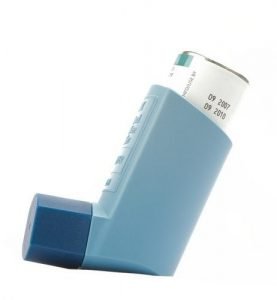What is Asthma?
Asthma is a long-term disease of the airways that makes breathing difficult causing symptoms such as coughing, wheezing, shortness of breath and chest tightness.
It is one of the world’s common long-term conditions. The prevalence and incidence throughout Africa had increased remarkably in recent years. The prevalence in Nigeria ranges from 14% to 18% in the general population.
In the ISAAC study conducted among children in Nigeria, the prevalence of asthma is 18.4%. The Nigerian Thoracic Society has estimated that out of the 300 million people believed to be suffering from asthma worldwide, 100 million Nigerians will suffer from asthma in 2025. Though the disease is widespread and regardless of the major strides in its pathophysiology, it seems to be spreading progressively.
Why Is Asthma Important?
Asthma attacks are one of the reason that kids with asthma miss school. According to the Centers for Disease Control and Prevention (CDC), more than 13 million schooldays are missed each year because of asthma, but well-managed asthma is far less likely to result in a sick day. When kids’ asthma is under control, they have far fewer attacks.
Asthma is not a curable disease; therefore effective management and treatment plan is a necessity in controlling the disease, so as to reduce the associated morbidity and mortality.
The Asthma Action Plan
To avoid the liability that could result from ineffective management, emphasis must be made on importance of prompt treatment. Hence, a need for teachers, coaches, day care providers, and educators to create an asthma action plan.
The aim of an asthma action plan is to help take early action in preventing or reducing the severity of an asthma attack. A plan will outline what symptoms to watch out for, the medicines the child needs to take, how they should be taken, what triggers to avoid, when to take the child to hospital and more.
How To Help A Casualty During An Asthma Attack
- Sit the person upright

– Loosen tight clothing
– Be calm and reassuring
– Do not leave them alone - If the person has asthma medication, such as an inhaler, assist in using it.
– If the person doesn’t have an inhaler, use one from a first aid kit. Do not borrow someone else’s. The medicine in it may be different than the needed rescue medicine. Also, using someone else’s inhaler has a slight risk of passing on an infection. - Remove the inhaler cap and shake well.
– Have the person breathe out all the way and seal lips tightly around inhaler mouthpiece.
– As the person starts to breathe in slowly, press down on inhaler one time.
– The person should keep breathing in as slowly and deeply as possible (about 5-7 secs) and then hold breath for 10 secs.
– Give a total of four puffs, waiting about one minute between each puff. - Continue using inhaler if breathing is still a problem
– After four puffs, wait four minutes. If the person still has trouble breathing, give another set of four puffs.
– If there’s still little or no improvement, give 4 to 8 puffs every 20 minutes for up to 4 hours till help arrives. — If you are still waiting for help after 4 hours, the recommended dose is 4 to 8 puffs as needed every 1 to 4 hours. - Monitor the casualty until help arrives or you go to the hospital
– Do not mistake drowsiness as a sign of improvement; it could mean asthma is worsening.
– Do not assume the person’s asthma is improving if you no longer hear wheezing. - If they lose responsiveness at any point, open their airway, check their breathing and prepare to treat someone who’s become unresponsive.
NB: Do you know we teach first aid classes for Parents, Caregivers, Schools and the Workplace? These lifesaving skills gives you the confidence to help someone with minor bleeds, burns, seizures etc to serious cases such as cardiac arrests. Call us on now to book a class.



